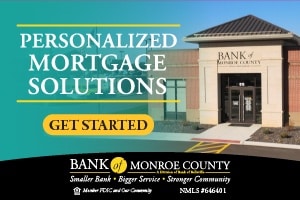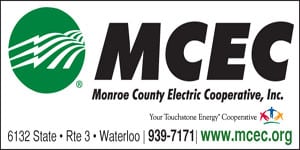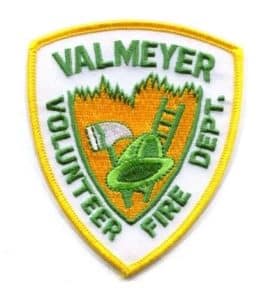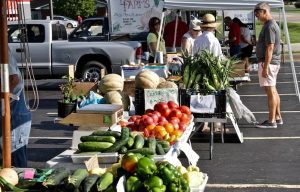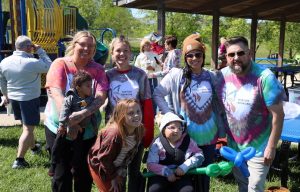Columbia putting its arms around history
When old timers gather, they often wax eloquently about childhood memories of where they grew up.
Columbia doesn’t want those memories to pass. The city is pressing forward with a plan to identify and preserve structures and other elements that were the fodder of these memories and tales – even back to its prehistory.
The plan isn’t just about putting plaques on buildings. It extends to capturing the community’s history from its earliest residents up to today, and then sharing that information with future generations. It is an effort to preserve the flavor of Columbia’s origins and make it a living part of its present and then to carry it into the future.
Paul Ellis, Columbia’s Director of Community and Economic Development, said the city is working on a Community Preservation Plan. Ellis said there have been previous plans.
“There have been studies. They have come in spurts, but for the most part, they have been put on the shelf,” he said.
A well-known Columbia history buff is retired high school principal Dennis Patton.
“Many of the efforts focused on the passions of individuals – old buildings, buildings with tin roofs,” he said.
But two years ago, Columbia became what is termed a Certified Local Government. This certification by the Illinois Historical Preservation Agency and National Park Service recognizes efforts to develop and implement local ordinances and programs to preserve historical structures. Achieving it earns access to grants – such as the one that enabled the current plan to be developed – and other support for the effort.
“We are one of the 10 most active CLGs in the state,” Ellis said. “We are getting our arms around the past plans, bringing them together and trying to share them with the community in a single package.”
The basic thrust is to try to
retain and preserve old buildings and other evidences of history, such as Indian mounds and historic trails.
“We want to preserve the buildings that are part of Columbia’s rich history in usable states,” Ellis emphasized.
Historic preservation efforts in some places are viewed with concern by owners who fear they will lose control of their property.
“We are not about forcing anyone to accept designating their home or business place as a historic landmark. If we view a building as being historically valuable, we may approach its owner, tell them of their structure’s significance and recommend that they seek to have it recognized. Once that’s done, the structure’s status is formally noted on the deed. That can in turn earn certain technical and other support to preserve the structure,” Ellis said.
Columbia currently has 23 such designated structures. Once a building is registered, there is a process for getting permission to make changes.
Dennis Patton, who heads up Columbia’s nine-member Heritage and Preservation Commission, said they issue what is called a certificate of appropriateness.
“For example, if an owner wants to replace his windows, or reroof a building, that’s improvement and is fine. We seek only that they maintain the historic appearance. We absolutely would rather save a structure with improvement that continues its usefulness than lose it to decay,” Patton added.
Columbia’s plan reaches back long before recorded history. That element owes much to Dr. John Kelly, a Columbia resident and Washington University archaeology professor. Kelly has played a strong role in pushing to get federal recognition for the remaining evidence of Native American habitation in the area.
The region was once the center of North American civilization, with a community as large as 1,000 people surrounding the Pulcher Mound group for 100 years, Kelly recently told the Republic-Times (March 26 issue).
St. Louis has lost all but one of the mounds that caused it to be called the “Mound City” at one time. And Columbia doesn’t want to lose its thread to that past.
Many residents are familiar with historic buildings on the city’s Main Street and elsewhere through the town. But what historic structures may be less evident?
Are you familiar with so-called Sears Homes? From 1908 to 1940, you could order a house from a Sears and Roebuck catalog. They varied from a rudimentary three-room cottage – with an outhouse as an extra purchase – to a house called “The Magnolia,” for $5,849, featuring three stories, with “Gone with the Wind” style pillars out front. They were delivered by train, with precut, marked wood pieces, windows and doors, roofing materials and even nails to put them together.
Columbia is home to two of these buildings from that era and source. They are both lived in today. Another kit home – an “Aladdin,” is also located in Columbia.
The city is also home to three former one-room school houses. Shoemaker School was moved to its current location when Route 3 was improved. Today it serves as the Monroe County Welcome Center. The others are the Sand Bank and Old St. Paul Lutheran schools.
Sand Bank School’s preservation is an interesting tale.
“I learned about it at my first Preservation Commission meeting,” Patton said. “It was for sale and a farmer was interested in buying it and bulldozing it to make room for farm buildings. I saw it and wanted to buy it.”
Combining money from his retirement funds and contributions, he got it for $40,000. It had interior walls and a false ceiling when it was a home.
“When we removed them, the original windows and ceiling light fixtures were still there,” Patton said.
Today, he and others have restored Sand Bank School and it is a community resource.
Looking at the whole community, Ellis said there are numerous buildings that should be preserved as part of Columbia’s history. There are two main districts as well. One is obvious – the business district along South Main Street. The other is at the north end of Main, where Ellis said there is an amazing cluster of historic homes and associated buildings.
Again – the effort is more than finding and designating historical structures.
Columbia annually brings second graders to the Shoemaker and Sand Bank schools to experience firsthand how youngsters were educated in bygone times. Students and teachers dress in period garb and have a day of fun and learning.
“We want to extend this into a block of education every student will get as they move through Columbia’s schools,” Ellis said. “We want their community and its heritage to be part of their lives,” he emphasized.
The Community Preservation Plan is comprehensive and has support to make it vibrant and an important part of the way to the future. It brings past and present together, and is admittedly lengthy and voluminous. Citizens are urged to read it at www.columbiaillinois.com. If they don’t have time to read it all, they may look at what interests them and make comments concerning the document and its contents. Comments can be emailed to pellis@columbiaillinois.com or by mail at Columbia City Hall, 208 S. Rapp Ave., Columbia, IL 62236.
They may also attend a public hearing at 6:45 p.m. on June 2, at City Hall to share their thoughts and learn more.

